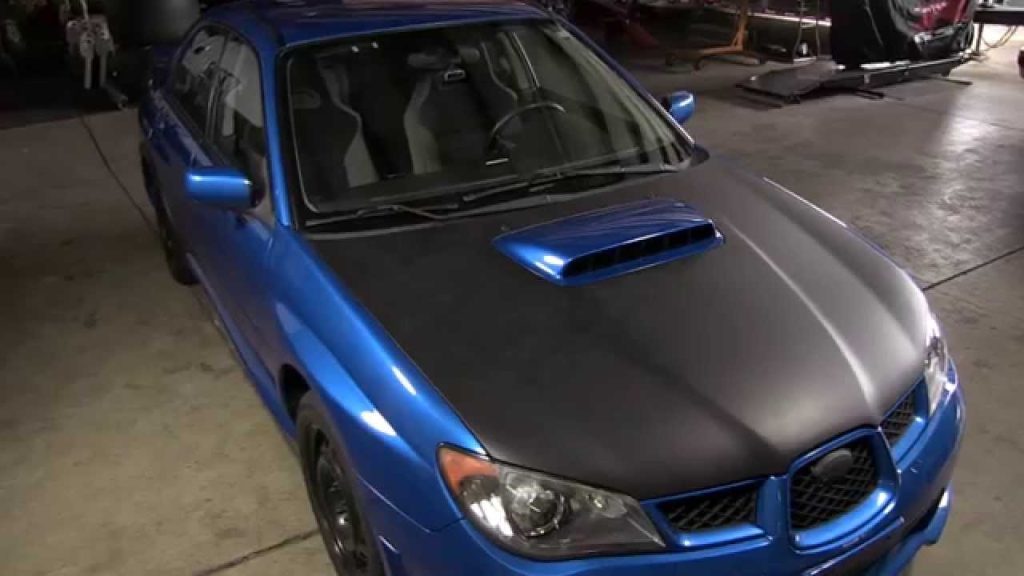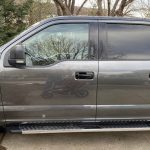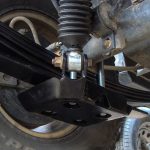Navigating the landscape of DIY automotive finishes can be as intricate as the designs you envision for your vehicle. Among the myriad choices, the dilemma often boils down to Rust-Oleum Peel Coat and Plasti Dip. Let’s embark on a comprehensive journey to unearth the nuances of these peelable coatings and determine which one reigns supreme for your DIY automotive projects.
Understanding Rust-Oleum Peel Coat
Rust-Oleum Peel Coat has become synonymous with versatility in the world of peelable coatings. This rubberized layer offers a temporary shield to your vehicle, allowing for easy removal whenever you decide it’s time for a change.
Advantages of Rust-Oleum Peel Coat
- Ease of Application: One of the standout features of Rust-Oleum Peel Coat is its user-friendly application. Whether you’re a seasoned DIY enthusiast or a novice, the process is smooth and hassle-free.
- Color Options: The spectrum of available colors ensures that your automotive project is not just protected but also aesthetically pleasing. From vibrant hues to understated tones, Rust-Oleum Peel Coat caters to diverse preferences.
Limitations of Rust-Oleum Peel Coat
While Rust-Oleum Peel Coat offers a multitude of benefits, it’s essential to acknowledge its limitations.
- Durability Concerns: The temporary nature of this coating implies that it might not endure the elements as robustly as a more permanent solution.
- Limited Specialty Finishes: If you’re looking for a specific finish, Rust-Oleum Peel Coat might not offer the same variety as its competitor, Plasti Dip.
Plasti Dip: A Competitor in the Arena
In the opposing corner, we have Plasti Dip, a heavyweight in its own right. Renowned for its rubberized texture, Plasti Dip introduces a unique tactile element to your automotive ventures.
The Plasti Dip Advantage
- Textured Finish: Plasti Dip’s distinctive rubberized finish provides a unique touch that sets it apart from conventional coatings. The texture not only adds character but also offers an extra layer of protection.
- Durability: Plasti Dip is celebrated for its durability, standing up to the elements with resilience. Whether it’s scorching heat, torrential rain, or biting cold, Plasti Dip holds its ground.
Points to Ponder with Plasti Dip
No product is without its considerations, and Plasti Dip is no exception.
- Application Learning Curve: While not insurmountable, the application of Plasti Dip might present a steeper learning curve for those new to the DIY automotive scene.
- Limited Color Options: Plasti Dip’s color palette, while suitable for many, may not offer the extensive range found with Rust-Oleum Peel Coat.
Head-to-Head Comparison
Let’s embark on a detailed exploration of the factors that distinguish Rust-Oleum Peel Coat from Plasti Dip.
1. Application Process
Both Rust-Oleum Peel Coat and Plasti Dip are designed to be user-friendly, but the devil lies in the details. Rust-Oleum Peel Coat’s application process is often lauded for its simplicity, making it an excellent choice for beginners. The smooth application ensures an even coat without the need for professional expertise.
2. Color Options
If variety is the spice of life, then Rust-Oleum Peel Coat is the flavorful option. Boasting an extensive array of colors, this peelable coating allows you to unleash your creativity without constraints. On the flip side, Plasti Dip’s color options, while sufficient for many projects, might feel slightly limited in comparison.
3. Texture and Finish
Plasti Dip takes the lead in the texture department. Its rubberized finish adds a tactile dimension to your vehicle, creating a surface that not only looks different but also feels different. For those seeking a departure from the conventional, Plasti Dip’s unique texture might be the game-changer.
4. Durability
When it comes to standing the test of time and weather, Plasti Dip emerges as the winner. Its resilience against various elements ensures that your DIY project maintains its allure for an extended period. Rust-Oleum Peel Coat, while providing adequate protection, may need more frequent touch-ups in harsh conditions.
Real-world Experiences
To truly gauge the effectiveness of these coatings, let’s delve into the experiences of DIY enthusiasts who have ventured into the realm of Rust-Oleum Peel Coat and Plasti Dip. (See Also: Can You Spray Fluid Film Over Rust? Tips for Effective Rust Prevention)
User 1: Rust-Oleum Peel Coat
“I embarked on a journey to revamp my car’s appearance with Rust-Oleum Peel Coat. What struck me was the ease of peeling it off when I craved a change. The application was straightforward, and the color options allowed me to experiment. However, I did notice that it required touch-ups more frequently than I initially anticipated.”
User 2: Plasti Dip
“Opting for Plasti Dip was a deliberate choice to give my vehicle a cool, rubberized feel. It endured harsh weather conditions admirably, and the textured finish added a layer of uniqueness. The learning curve for application was there, but with some patience, the results were worth it. It’s been a few seasons, and my car still looks as vibrant as the day I dipped it.”
Making Your Decision
As you stand at the crossroads of Rust-Oleum Peel Coat and Plasti Dip, several factors should influence your decision-making process.
Factors to Weigh
- Project Complexity: If you’re just starting in the world of DIY automotive projects, Rust-Oleum Peel Coat offers a smoother entry point. Its forgiving application process ensures that even beginners can achieve professional-looking results.
- Texture Preference: Plasti Dip’s rubberized texture adds a tactile dimension to your vehicle. If this unique finish aligns with your vision, Plasti Dip might be the preferred choice.
- Color Customization: The extensive color palette of Rust-Oleum Peel Coat allows for creative freedom. Consider whether the specific color you desire is available in the options provided by each coating.
Expert Tips for Choosing Between Rust-Oleum Peel Coat and Plasti Dip
Navigating the nuances of peelable coatings requires a keen eye for detail. Here are some expert tips to guide you through the decision-making process when choosing between Rust-Oleum Peel Coat and Plasti Dip for your DIY automotive endeavors.
1. Project Vision: Align Coating with Your Design Goals
Before diving into Rust-Oleum Peel Coat or Plasti Dip, define your project vision. Rust-Oleum’s extensive color options might be your ticket to creative freedom, while Plasti Dip’s textured finish could add that extra flair. Let your design goals steer you toward the coating that aligns seamlessly with your vision.
2. Consider Application Experience: Beginners vs. Enthusiasts
For those new to the world of DIY automotive projects, Rust-Oleum Peel Coat offers a gentler learning curve. Its forgiving application process ensures even novices achieve professional-looking results. However, if you’re an enthusiast seeking a challenge and aiming for a distinctive texture, Plasti Dip might be your canvas.
3. Climate Factors: Assessing Durability
Your geographical location matters when it comes to the durability of your coating. If you live in an area with harsh weather conditions, Plasti Dip’s resilience might be the deciding factor. Consider the climate and choose a coating that can withstand the elements without compromising aesthetics.
4. Experimentation: Test Small Areas Before Full Application
Before committing to coating your entire vehicle, conduct small-scale experiments. Test both Rust-Oleum Peel Coat and Plasti Dip on inconspicuous areas to gauge the application process, color accuracy, and durability. This precautionary step can prevent surprises and ensure the desired outcome for your entire project.
5. Maintenance Considerations: Touch-Ups and Longevity
Think about the maintenance aspect of your chosen coating. Rust-Oleum Peel Coat, while easy to remove and reapply, may require more frequent touch-ups. On the other hand, Plasti Dip’s robust durability might mean less maintenance in the long run. Factor in your willingness for periodic touch-ups and the longevity you expect from your DIY project.
6. Customization Options: Explore Beyond Standard Choices
While both coatings offer a range of standard colors, delve into customization options. Some DIY enthusiasts have experimented with mixing colors, adding pearls, or even creating gradients. Rust-Oleum Peel Coat’s extensive color palette might offer more room for experimentation, giving your project a truly unique touch.
7. Community Insights: Learn from Others’ Experiences
Tap into the wealth of knowledge within the DIY automotive community. Online forums, social media groups, and dedicated platforms often feature discussions about Rust-Oleum Peel Coat and Plasti Dip experiences. Learn from others’ successes and challenges to refine your approach and enhance the outcome of your project. (See Also: Will Bondo Stick to Plastic? A Comprehensive Guide to Plastic Bonding)
8. Surface Preparation: A Crucial Step for Long-Lasting Results
Before applying either coating, invest time in thorough surface preparation. Clean the surface, remove any contaminants, and ensure a smooth canvas for your chosen coating. Proper preparation sets the foundation for a long-lasting and visually appealing finish.
9. Layer Thickness: Striking the Right Balance
Achieving the desired thickness is crucial for both Rust-Oleum Peel Coat and Plasti Dip. Follow the recommended guidelines for layer thickness to avoid issues like uneven texture or difficulty in removal. Striking the right balance ensures optimal performance and visual appeal.
10. Protect Surrounding Areas: Masking Is Key
Whether you opt for Rust-Oleum Peel Coat or Plasti Dip, masking surrounding areas is a non-negotiable step. Use quality masking tape and plastic sheeting to protect windows, trim, and any components you want to keep free of the peelable coating. Attention to detail during masking contributes to a professional-looking finish.
Armed with these expert tips, you’re now better equipped to make an informed decision between Rust-Oleum Peel Coat and Plasti Dip. Your choice should align with your project goals, application experience, and the specific demands of your environment. Happy coating, and may your DIY automotive venture be a masterpiece on wheels!
FAQs: Decoding the Mysteries of Rust-Oleum Peel Coat vs. Plasti Dip
Embarking on a DIY automotive project brings forth a plethora of questions, especially when it comes to choosing between Rust-Oleum Peel Coat and Plasti Dip. Let’s unravel the mysteries with these frequently asked questions and expert answers.
Q1: What distinguishes Rust-Oleum Peel Coat from Plasti Dip?
Rust-Oleum Peel Coat and Plasti Dip are both peelable rubber coatings, but their distinctions lie in factors like application ease, color options, and durability. Rust-Oleum is renowned for its user-friendly application, while Plasti Dip boasts a unique rubberized texture and enhanced durability.
Q2: Which coating is more beginner-friendly?
For beginners, Rust-Oleum Peel Coat is often the preferred choice due to its forgiving application process. The ease of use ensures that even novices can achieve professional-looking results without a steep learning curve.
Q3: Are the color options the same for both coatings?
No, the color options vary between Rust-Oleum Peel Coat and Plasti Dip. Rust-Oleum offers a vast spectrum of colors, providing more choices for customization. Plasti Dip, while sufficient for many projects, may have a more limited color palette.
Q4: Which coating has a more distinctive texture?
Plasti Dip takes the lead in terms of texture. Its rubberized finish adds a unique tactile element to your vehicle, providing a departure from conventional coatings. Rust-Oleum Peel Coat, while offering versatility, may not provide the same distinctive texture.
Q5: What factors should I consider for durability?
Consider your geographical location and climate when assessing durability. Plasti Dip is celebrated for its resilience against harsh weather conditions, making it a suitable choice for areas with extreme climates. Rust-Oleum Peel Coat, while durable, may require more frequent touch-ups. (See Also: What Primer to Use Over Body Filler? A Comprehensive Guide)
Q6: Can I customize the colors of these coatings?
Yes, customization options exist for both Rust-Oleum Peel Coat and Plasti Dip. DIY enthusiasts often experiment with mixing colors, adding pearls, or creating gradients. Rust-Oleum Peel Coat’s extensive color palette provides more room for experimentation.
Q7: How do I ensure a long-lasting finish?
Proper surface preparation is key to a long-lasting finish. Thoroughly clean the surface, remove contaminants, and follow the recommended guidelines for layer thickness. Additionally, protect surrounding areas with quality masking to ensure a professional-looking result.
Q8: Can I remove and reapply these coatings easily?
Yes, both Rust-Oleum Peel Coat and Plasti Dip are designed to be peelable, allowing for easy removal when desired. However, the frequency of touch-ups may vary, with Rust-Oleum Peel Coat potentially requiring more frequent reapplication.
Q9: Are there community resources for more insights?
Certainly! Engage with the vibrant DIY automotive community through online forums, social media groups, and dedicated platforms. Learning from others’ experiences can provide valuable insights into the nuances of working with Rust-Oleum Peel Coat and Plasti Dip.
Q10: How important is masking during the application process?
Masking is a crucial step during the application of both coatings. Protect windows, trim, and any components you want to keep free of the peelable coating with quality masking tape and plastic sheeting. Attention to detail during masking contributes to a professional-looking finish.
These FAQs aim to demystify the decision-making process between Rust-Oleum Peel Coat and Plasti Dip. Armed with these answers, you can navigate the intricacies of each coating and make an informed choice for your unique DIY automotive project. Happy peeling and dipping!
Conclusion
In the Rust-Oleum Peel Coat vs. Plasti Dip showdown, there’s no definitive winner. The choice hinges on your specific needs, preferences, and the vision you have for your DIY automotive project. So, roll up your sleeves, get creative, and give your ride the makeover it deserves—whether you choose the reliable versatility of Rust-Oleum Peel Coat or the textured resilience of Plasti Dip, the journey of transformation awaits!



